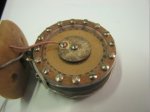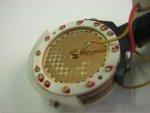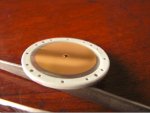Hi, Mark,If my memory is not that rusty, the oxide is a chemical composition of oxygen and some kind of material. The part of the picture you show contains Mylar, as well as plastic (the clamping ring), which both to my knowledge are immune to oxidation (i.e. fusion with oxygen).
Furthermore, Gold (the Mylar coating) is not a very easy metal to get oxidized, either. In the pictures you posted above I am still trying to understand what is wrong with those capsules, as apart from slight signs of Gold peeling (most likely amateurish attempt to clean), they all look they should work just fine.
Best, M
I agree with you that gold does not get oxidized easily, but I could not find a better term to match with what I see in some old capsules. Maybe you can help me come up with one? What would you call the grayish rusty stuff on top of the diaphragms' golden coating?








 I don't need much . . .
I don't need much . . .